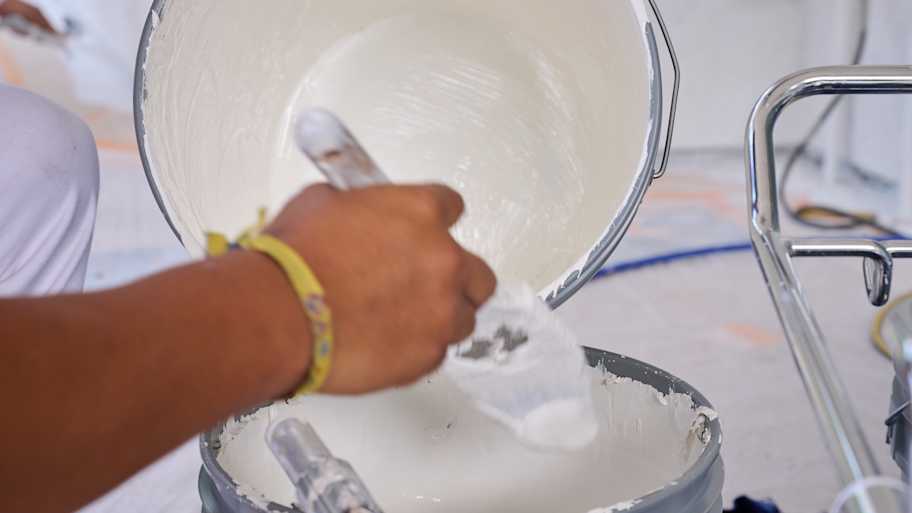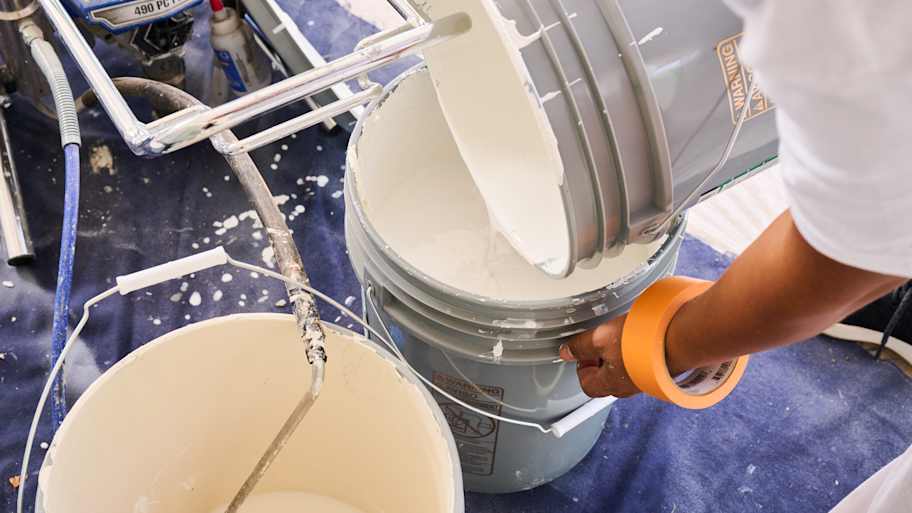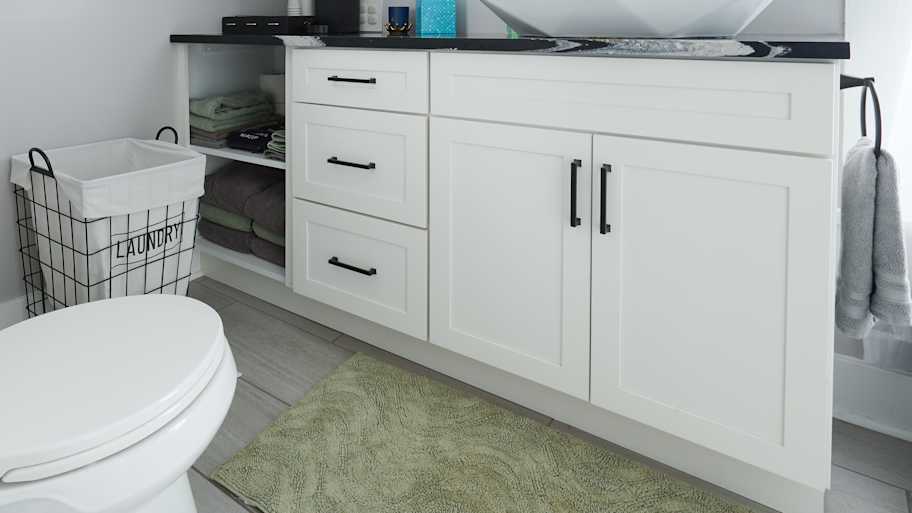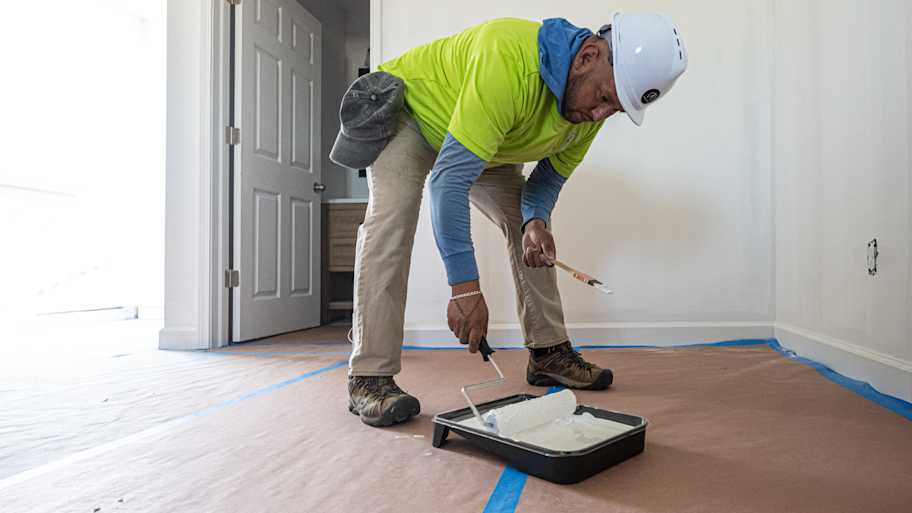How to Use a Paint Sprayer: Step-by-Step Guide
Get your spray on the right way


Painting can be an arduous and time-intensive task, especially if you’re painting an entire house exterior or multiple interior spaces. Luckily, learning how to use a paint sprayer can quicken the pace, simplifying large and small jobs.
However, you need some practice with this tool to unlock its full potential. Here are some steps to successfully use a paint sprayer, so you can leave that brush and paint roller in the dust.
Why Should I Use a Paint Sprayer?
With a paint sprayer, the machine does most of the work, so they spread paint, stains, and finishes much quicker than any brush or roller. If you’re staring down a large wall or a chain-link fence, you want any and every speed advantage.
Paint sprayers have another significant benefit over rollers and brushes. They apply even coatings to uneven surfaces, like stair railings and window shutters, eliminating those nasty brush drips. Finally, the best paint sprayers transform liquid paint into a fine mist, allowing for some unique aesthetic options like creating a mirror-like finish.
When to Use a Paint Sprayer
Paint brushes and rollers have their place, but some jobs practically scream for a paint sprayer. Generally speaking, you can use a paint sprayer for large paint jobs, including home exteriors like painting a metal roof, multiple bare interior rooms or walls, wrought-iron railings, and any commercial space. The ability of paint sprayers to apply an even coating to uneven surfaces also makes them a great choice for any delicate item where brush marks and drips are a no-go, such as painting metal, furniture items, window shutters, and more.
Of course, sprayers are not appropriate for every painting project. A paint brush or roller is best for small, detailed jobs. Additionally, brushes allow for more precise control, which comes in handy for certain scenarios like painting accent walls (watch out for drips and brush marks.)
How to Use a Paint Sprayer
You can unlock the benefits of a paint sprayer by developing a certain level of comfort with the process. Here’s how to properly use a paint sprayer or paint gun.
1. Choose the Right Sprayer
Start by selecting the appropriate sprayer for your skill level, the job at hand, and the type of paint. There are plenty of designs out there, so here is a quick primer.
Airless sprayers: This sprayer type distributes paint through a hose, with no compressed air required. Airless sprayers offer near-universal paint compatibility, working with thick latex paints and thin stains. These sprayers are built for speed, so exercise caution when using one to avoid injury from the tip or needle.
Cup sprayers: This is a more budget-friendly and DIY-friendly subcategory within the airless sprayer space. They are easy to use, portable, and compact, with the paint stored in a cup instead of a large, separate container. They work with many paint types, though some require a paint thinning solution. The power is less than airless sprayers, but the accuracy is increased, so use this type of sprayer when performing touch-ups on fences, decks, and the like.
Compressed air sprayers: Otherwise called pneumatic sprayers, these sprayers use compressed air to project paint onto a surface. It’s an extremely powerful design, so it is mostly used for large-scale industrial applications. Most compressed air sprayers require paint thinner and, as a warning, they use a lot of paint.
HVLP sprayers: High-volume, low-pressure (HVLP) sprayers are similar to compressed air designs, but have a weaker airflow to create a mist-like spray pattern. This method increases transfer efficiency so you waste less paint. Additionally, HVLP sprayers are easy to use and safe to use, so masking up and drop cloths are not requirements. These have a variety of uses, from painting a room, the exterior of a small house, or even painting trim.
2. Choose the Right Paint
Picking the right paint for your sprayer and the job at hand is very important. You want the paint to flow smoothly and evenly through the hose and nozzle without encountering any clogs. Read through the instructions of your sprayer for relevant information, but there are some general use tips.
Ensure the paint viscosity is low, or make it low by adding a paint thinner. Generally speaking, airless paint sprayers work best with oil-based paints, while HVLP sprayers should avoid water-based latex paints unless the product is diluted ahead of time. Pneumatic paint sprayers work with oil-based enamel, acrylic, and latex paints.
3. Prepare the Space

Make sure to prepare for the spray painting process in three categories: The space, the sprayer, and the person doing the spraying.
For the space, make sure the room is well-ventilated. Open any windows and place window-mounted fans to exhaust the fumes. Cover the floor with drop cloths and tarps to protect rugs, carpeting, and furniture. Lay down painter’s tape on the baseboards, light outlets, and window and door sills for extra protection. Finally, have plenty of rags on-hand to clean as you go.
4. Assemble the Sprayer
Before operating the sprayer, read the instructions to ensure you are using the correct paint. Then, dilute the paint with paint thinner or run it through a strainer. You should also charge the battery that powers the sprayer. In some cases, it is a good idea to combine a ½ cup water for every gallon of latex paint as an alternative to dedicated paint thinner.
For the painter, safety is key. These sprayers emit mist at fairly long distances, so wear a mask, gloves, and other safety-enhancing items of clothing. Pay attention to your hands when operating these sprayers, especially around the tips or nozzles.
5. Practice on Another Surface

These sprayers necessitate a fairly steep learning curve, but practice makes perfect. However, practicing on your pristine walls is not the best idea. Use large scraps of cardboard or newspaper to get the hang of using your paint gun. Prop them up on a wall and practice spraying in straight, even lines. Do not move on to the actual project until you are comfortable with the nuances of your sprayer.
6. Spray Slowly and Consistently

Using a paint sprayer is all about making consistent movements along the vertical and horizontal axes. Try various movements to determine which creates the most even spraying pattern when practicing. Maintaining a uniform look is the name of the game with paint spraying.
Generally speaking, holding the sprayer close to a surface creates a narrower pattern, but holding it farther away creates a thinner coat and a wider spray pattern. Both have their uses, depending on the project. Check the instructions for the recommended maximum spraying distance, as spraying from too far away dries out the paint before it reaches the surface.
7. Clean After Each Use
Sure, paint sprayers are all about speed, but a post-job cleaning is one step you can’t gloss over. Each sprayer is different, so follow the manufacturer’s cleaning instructions to the letter, and allow the various components to dry in a well-ventilated room. Don’t forget that spray paint takes 24 hours to dry, so budget your time accordingly.
You should also consider using a storage fluid after cleaning. Apply a pump preserver or storage fluid after cleaning and run it through the system. This step helps truly clear out any errant particles. Do not use water for this task as it could corrode certain elements of the sprayer.
Taking Care of Your Paint Sprayer
Paint sprayers are a significant investment, especially compared to simple brushes or rollers. In other words, take care of your sprayer to ensure it sticks around for years to come.
Don’t forget the filters: Some paint sprayers use filters that you need to clean or replace after lengthy use sessions. Go over them with flushing fluid and a soft brush, and inspect them for obvious damage.
Store in a safe place: Like many tools, the best place to store a paint sprayer is in a temperate and dry part of the home. Avoid storing it in a spot with moisture or extreme temperature fluctuations.
Lubricate if necessary: Some airless sprayers require regular lubrication with dedicated piston oil. This oil lubricates the piston and the pump seals, plus absorbs errant dust and paint mist. Check the instructions to see if your specific sprayer requires this maintenance step.
DIY vs. Hire a Pro
Paint sprayers require a certain level of finesse for the best results, so consider hiring a local interior paint pro to handle the job if you are not comfortable yet. The average cost to hire a pro to paint your home’s interior is $1,950, depending on the size of the area in question. Still, there is no way to get comfortable with the procedure without practice, and paint spraying is DIY-friendly once you get the hang of it.
Frequently Asked Questions
Sure, but go slowly and read the instructions thoroughly before trying it. It helps to watch tutorial videos for your specific paint sprayer type and model. Additionally, if you are new to the world of paint sprayers, mask up, wear gloves, and avoid accidentally touching the tip when in use, especially with high-powered airless sprayers.
You can sometimes add water to your spray gun, depending on the design of your sprayer and the type of paint, paint finish, or sealant. In many cases, mixing in around 10% percent of water to the paint makes for an easier application process and further evens out the mist. Read the instructions to make sure this is an appropriate step.
The number of paint coats you should apply varies by project, but many jobs call for two coats of paint. Make sure you let the first coat fully dry according to the manufacturer’s instructions before applying that second coat. Luckily, paint from a sprayer dries rather quickly due to the nature of the fine mist created by the sprayer.





- Spraying vs. Rolling Paint: Which Is Best for Your Project?
- Best Paint Sprayers for Your Home Improvement Project
- Is It Better to Spray or Roll Exterior Paint? How to Decide
- 10 Common Painting Mistakes Homeowners Should Avoid
- How to Fix the Spray Hose on Your Kitchen Sink
- How to Prep a House for Exterior Painting in 8 Steps
- What to Do When Your Painted Cabinets Feel Rough
- How Long Does Paint Last, and How Can You Tell If It’s Expired?
- 8 Exterior House Painting Tips You Should Know
- 11 Painting Tips and Techniques for Your Home Painting Project










